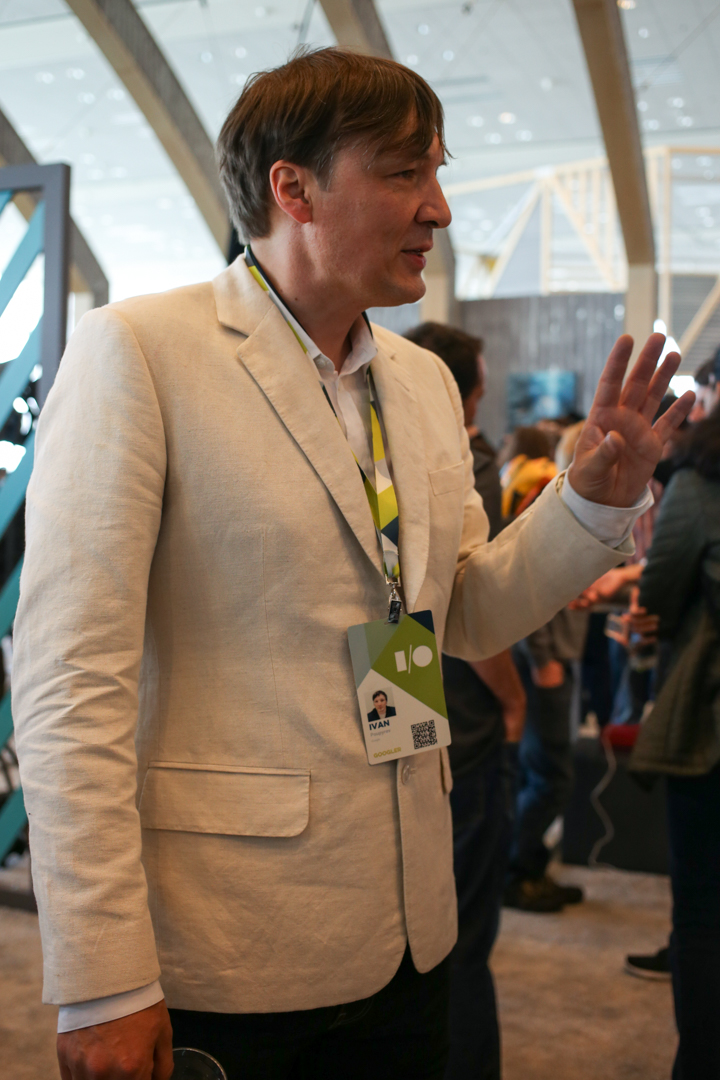Inside Project Jacquard: How Google is threading together its plan for smarter clothes

One of the most exciting announcements to come stories out of last week's Google IO was Project Jacquard. Hailing from Google's Advanced Technology and Projects division, this nifty technology impressed with its ability to turn what looks like ordinary fabric into a touch-sensitive surface.
Sound like the stuff of the distant future? A world where you can adjust your smartphone's music playback or dim the lights with a swipe of the finger on your jeans may be closer than you think. Ivan Poupyrev, the technical program lead on Project Jacquard, shared with TechRadar his insights on what distinguishes this new interface technology, how it will work, and how Project Jacquard transforms the concept of wearables.
TechRadar: Tell us about the magic behind Project Jacquard, specifically the conductive yarns that provide the touch area on a textile?
Ivan Poupyrev: We have our own custom yarns, which we designed, which nobody else has. It's the best conductive yarn you can get now for the electronics. It's strong, really strong; strong enough to withstand the highly harsh [textile] manufacturing process. And it's beautiful, so textile designers and fabric designers won't feel constrained. You can use anything you want: linen, silk, cotton, wool.
TR: How are the yarns made today?

IP: We have a factory in Japan that has pilot production, and they produce the yarns for us. We worked with them to design the process, and to design the machines. We're testing the yield - how [the yarns] work on stretching, on bending, on washing, on stretching - and [testing] how it works with different materials, how thick we can make, how thin we can make. It's a massive effort.
TR: Why is the yarn braided?
Sign up for breaking news, reviews, opinion, top tech deals, and more.
IP: If you take a normal yarn, which is twisted, it's weak and it breaks easily. In our case, [we braid the yarn and] every filament in the braided yarn needed strength. Furthermore, as you're stretching it, it shrinks and gets stronger. You cannot break it by hand.
TR: What is the other component of Project Jacquard that enables you to create textiles with a conductive segment?
IP: Our weaving structure. We've designed various techniques to weave it so [the conductive area is] completely invisible. We localize it in one place, right here. [Poupyrev points to the sleeve of the tailor-made linen jacket he's wearing.] The conductive area is here, and the rest of the textile is exactly the same; there is nothing different. There is only one special area. We can weave it very precisely, any way we want. By using our techniques, we can place [the area] anywhere you want on the garment.
TR: How will the conductive layer attach to electronics?
IP: The connections are standard. We designed this very simply. Right now the electronics are super tiny. The electronics we use are the same size as this button, and then they become smaller. Right now, we do Bluetooth connections to everything you want.
TR: Can the electronics inside withstand the rigors of daily use, wash and wear?
IP: There are two approaches here. Approach number one is you can make the electronics [waterproof] and seal it tightly in the jackets. We have waterproof electronics everywhere, we have pacemakers inside the body, we have things that are going into the water. But there's more than just that. Is it recyclable, what about repairing? There's a million different things [to consider]. So another approach is to have an external connector where you can plug in the electronics externally, and just leave a little button going in, and then it will power your garment. It may be done invisibly, in the pocket, or anywhere.
TR: This technology is literally a wearable in the sense that you'll wear it, just as you would any other garment in your closet today. How does this paradigm shift inform how you approach creating the gesture language that goes along with Project Jacquard?
IP: Any wearable technology is very strongly defined by the form factor. If you want to design a watch, the software you make has to be designed for the experience. The software you design for the wearable has to be very different.
TR: At Google IO, the demos show how one could use the touch area to control music playback and volume on a smartphone, and to adjust the lights above. What other functionality might be built into a Jacquard-enabled garment's electronics?
IP: Pretty much everything activity trackers can do, our garment will be able to do. Look at what wearables can do [now]. Every wearable is one thing. We can probably integrate all of those different function[s] in our garments right away.